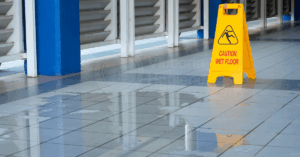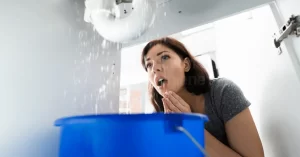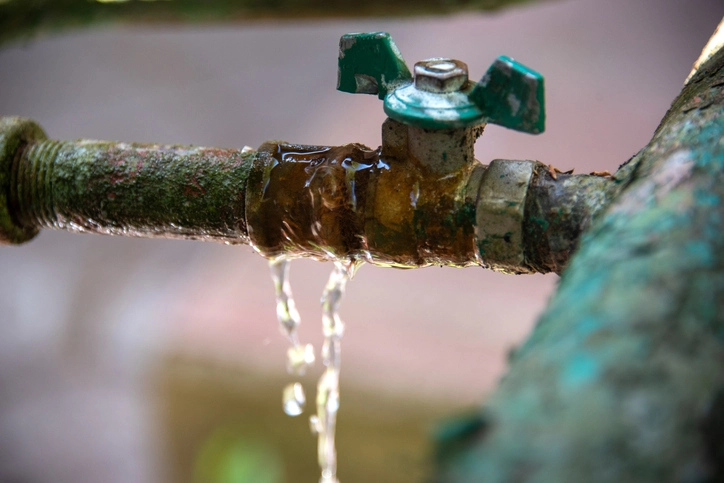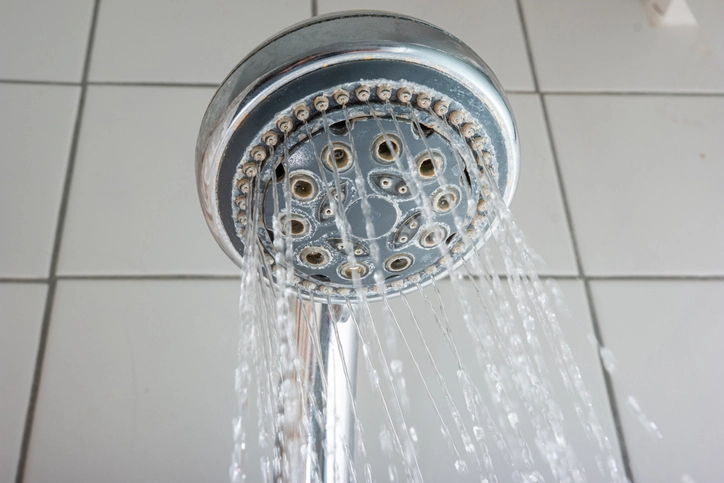5 Typical Forms of Water Damage To Your House, And How To Repair It
Deep still waters… particularly if you neglect to address leaks or water damage in your house properly.
Water damage is a frequent and frequently disregarded home problem that has the potential to grow quickly into more serious ones. While it’s simple to assume that a small leak in the bathroom tiles or roof isn’t a big deal, the truth is that small leaks can eventually lead to larger issues, such as mould growth or worse.
Here are 5 of the most common types of water damage in a house, along with tips on what you can do to help stop the flow.
Wet Floors

Water damage signs include the development of mould, rotting wood, and a musty odour.
The reason: Poor subfloor ventilation, standing water beneath the house, and clogged vents are the main causes.
The fix: According to David Lakes, director and builder at Lochbuild, is to “first clear the subfloor of any leaves or rubbish, unblock any vents that may be covered, and check your gutters to make sure water isn’t pooling under the house. Next, utilise a moisture metre or seek guidance from an expert who has dealt with the kind of home you live in.”
In a perfect world, David says, the dampness can be improved with dehumidifiers or low-voltage damp rods in wardrobes. You can also use fans or other subfloor ventilation. More ventilation will only help a structural timber member, but it won’t solve the problem.
The worst-case situation: “A concrete slab that is damp.” Compared to wood, it’s far more difficult to reach the underside of a concrete slab, claims David.
Water Entering Through Balconies
According to Paul Evans, president of the Australian Institute of Waterproofing, the warning signs include “internal and external water stains, problems closing balcony doors and windows due to swollen wood, cracked or missing grout on the balcony, and disgruntled neighbours below you.”
The reason: according to Paul, “poor waterproofing membrane, improper flashings, improper tile selection, inadequate drainage and improper door installation are all common reasons.”
The fix: According to David, is to “lay towels or buckets down to catch water to reduce immediate damage.” It is best to get in touch with your strata company if you live in an apartment instead of DIY.
The worst-case scenario: “Electrical systems may be harmed, decay may spread, and in the worst case, the balcony may collapse.”
Leaks in the Roof

The telltale signs include puddles on the floor, mould growth, and water stains on the walls or ceiling. Recall that this could get dangerous if there is electrical wiring in your ceiling.
The reason: There are numerous “It could be a variety of things, like improperly installed or punctured sarking under a roof, blocked gutters or a difference in metal composition on the roof, which leads to corrosion,” claims David.
The fix: Identifying the source of the leak is necessary. David says, “Look for any large, wet area in the roof space to find the leak and then divide it and test each area with a hose one day at a time.”
The best-case scenario: A leaky roof is a small hole, which is frequently brought on by plumbing or roof vent penetration. Paul advises using silicone sealant to temporarily fix the issue until a professional can be called in. Although every roof is unique, David says that flashing that is already there should be replaced or repaired.
The worst-case scenario: It is an ignored leaky roof because it requires more difficult and expensive repair work.
Repairing Gutter Leaks
The indicators include wet areas on interior walls or ceilings, standing water near the building’s foundation, moss and staining on walls, and masonry deterioration.
The reason is improperly angled guttering that prevents water from draining away and neglected gutters.
The fix: “Clean the downpipe connected to the gutter,” advises David as the solution. Next, pour a bucket of water along the gutter to gauge its “fall”; if it’s too steep, the water will overshoot, but if it’s not enough, the water won’t flow away.
David advises, “When a problem is solved with minor maintenance, the outcome is fantastic. The location of a property can often lead to worst-case scenarios. For example, I once worked on a house that was surrounded by fig trees, which prevented the box gutters from flowing freely and caused flooding inside the house. It was necessary to redesign and reinstall the roof. “
Top tip: Include some safety measures when installing new gutters. “In the long run, leaf guards and foam water stop under flashing may save you some heartache, but they cost a little more.”
Leaks in the Bathroom

According to David Conroy, a plumber and the proprietor of The Lone Drainer And Pronto in Sydney, “a water level higher than normal when the loo flushes, a shower that doesn’t drain freely, a gurgling drain or a sewer smell indicate poor drain and pipe health.”
There are additional indications. Paul continues, “Weatherproofing issues may be indicated by damp walls and ceilings, tiles that fall off the wall, and water dripping onto light fixtures.”
The reason: According to David Conroy, tree roots in the pipes account for 85% of blocked drains. “The remaining items include hair products, sanitary napkins (which do not decompose like toilet paper), baby wipes, toilet deodorizers, and, surprisingly, toys and undergarments.” When a bathroom is improperly waterproofed, gravity takes over and water seeps through cracks in the sealant, the walls, or the floor.
The answer: While doing grout or sealant repairs yourself can be helpful, it’s advisable to consult a professional. Paul says, “You’ll need professional help because failed waterproofing can cause severe water damage to the structure below, rotting substructure, or bathroom floor collapse.” “In most cases, there isn’t a best-case scenario when waterproofing fails; the bathroom must be completely stripped out and a new membrane installed.”
Regarding pipes, David Conroy advises, “know where to shut off your water supply, then phone a reputable plumber.”
In the best-case scenario, knowing where your pipes run allows for a quick repair.
Worst-case scenario: The worst cases occur in multistorey buildings where maintenance-poor access points are integrated into the structure, necessitating new tiles after the pipe is fixed.
Conclusion
As mentioned above, there are various types of water damage in a house. Water damage can be caused by small or large leaks and can impact the entire property and even lead to serious health issues. It is therefore recommended to act immediately after noticing any signs of water damage.
For a hassle-free solution, don’t hesitate to get in touch with our fully certified and well-trained leak detection and water damage repair and restoration technicians. We’re available 24/7 and guarantee to reach you within 1 hour to help prevent any further damage.
LATEST BLOGS & INSIGHTS
Expert Advice and Real Stories from Melbourne
Leak Detection
What Are The Common Reasons For Bathroom Leaks
Identify the most frequent causes behind bathroom leaks and their solutions.
Water Damage
How a Hidden Water Leak Can Cost You Thousands of Dollars
Exposed how hidden water leaks lead to costly repairs and property damage.
Leak Detection
The Importance Of Early Shower Leak Detection
Why spotting shower leaks early can save your home, property and budget.


